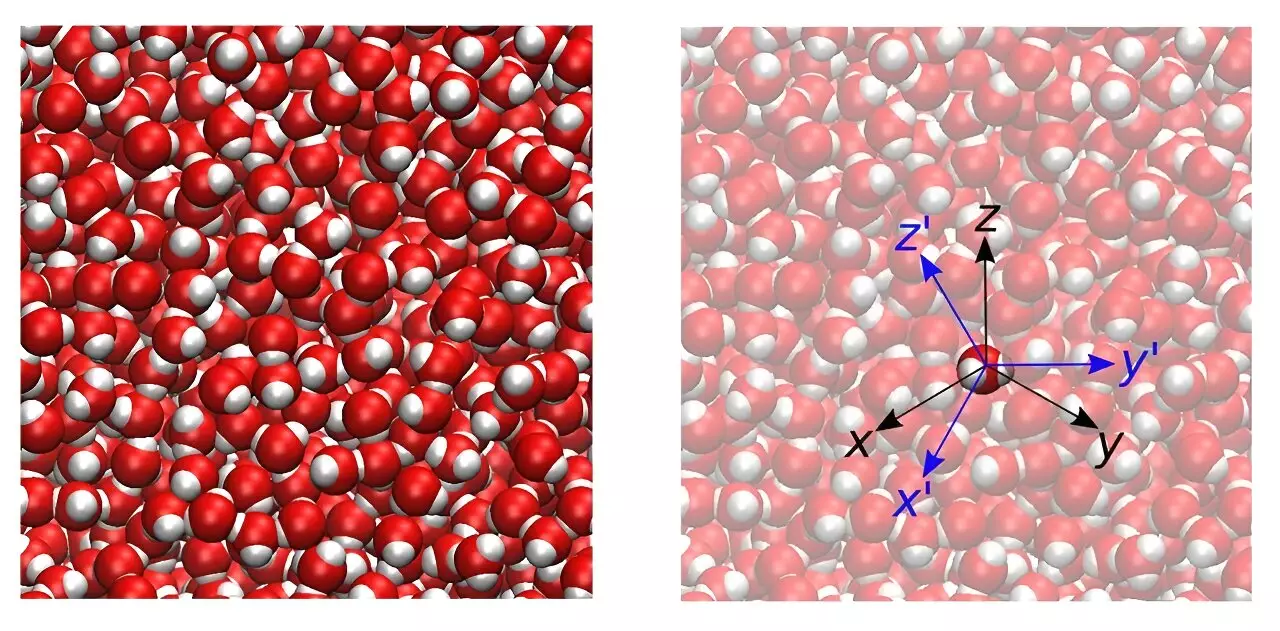The study conducted by the Department of Energy’s Oak Ridge National Laboratory raises important questions about the traditional approach to simulating molecular dynamics, particularly in the context of water molecules. The standard use of a 2-femtosecond time step has been called into question, with researchers recommending a shift to a smaller 0.5-femtosecond time step for better accuracy. This recommendation carries significant implications for the scientific community engaged in biomolecular simulations, given the fundamental role of water in these processes.
For almost five decades, the 2-femtosecond time step has been widely accepted as the standard in water simulations, dating back to a seminal paper published in 1977. At that time, computational resources were limited, leading researchers to adopt a rigid-body description of water molecules to enable the use of longer time steps and decrease computational intensity. However, recent findings by computational scientists at Oak Ridge National Laboratory suggest that this approach may introduce errors in both dynamics and thermodynamics when simulating water molecules.
One of the key challenges identified by the research team is related to achieving equilibrium in molecular simulations. According to the principles of statistical mechanics, the temperatures associated with translational and rotational motions of a system should be equal in equilibrium. Deviations from this equilibrium state can indicate inaccuracies in the simulation methodology. The use of a time step longer than 0.5 femtoseconds appears to disrupt this equilibrium, leading to discrepancies in temperature profiles and potentially inaccurate results.
The study’s findings underscore the importance of carefully assessing the time step used in molecular dynamics simulations, particularly for systems involving water molecules. Discrepancies between translational and rotational temperatures can have a cascading effect on the overall dynamics of molecular motion, impacting the accuracy of results obtained from the simulations. By adjusting the time step to 0.5 femtoseconds, researchers can potentially improve the reliability and fidelity of their computational models.
Moving forward, computational scientists are encouraged to revisit the time step parameter in their simulation protocols and consider adopting the 0.5-femtosecond time step for more accurate results. While this adjustment may lead to longer computational times due to the increased frequency of analyses, the availability of advanced computing resources makes this transition feasible. By prioritizing accuracy and equilibrium in molecular simulations, researchers can enhance the quality of their scientific investigations and contribute to a deeper understanding of biological systems.
The study conducted by Oak Ridge National Laboratory sheds light on the critical role of time step in molecular dynamics simulations, particularly in the context of water molecules. By challenging the long-standing use of a 2-femtosecond time step and advocating for a smaller time interval of 0.5 femtoseconds, the research team highlights the importance of reevaluating traditional simulation approaches to improve accuracy and reliability. These findings have the potential to influence future research practices in computational biology and chemistry, paving the way for more precise and insightful simulations in the field.


Leave a Reply